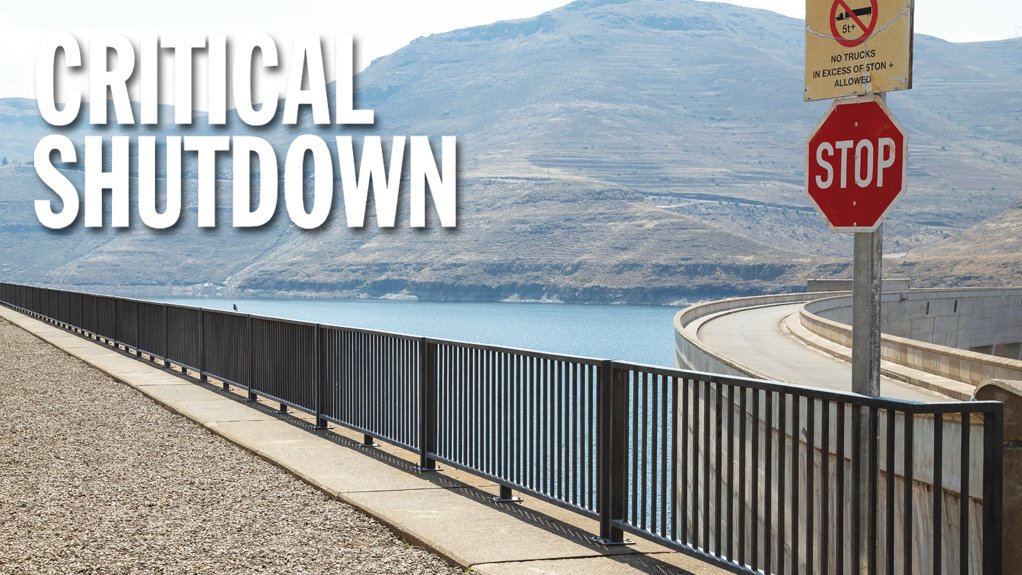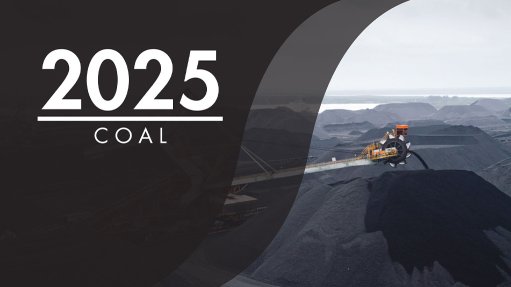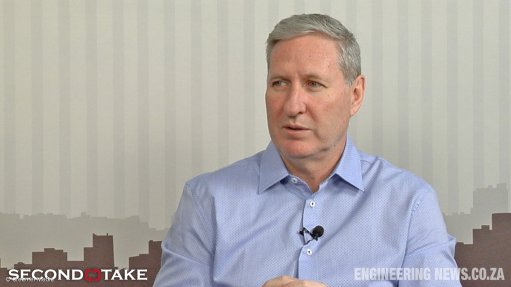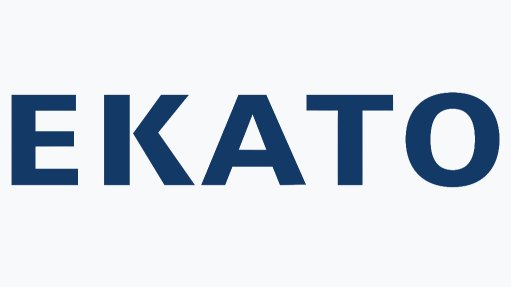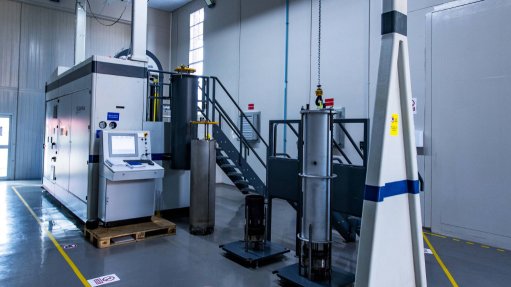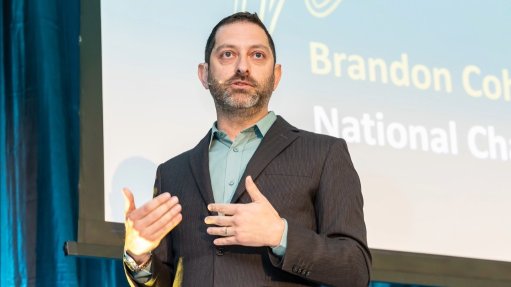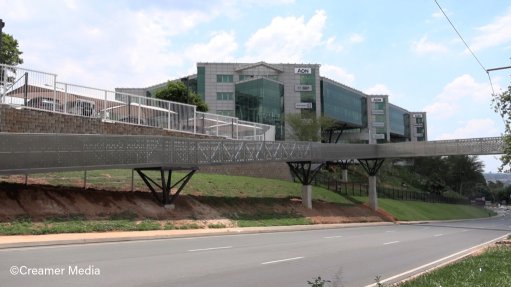Big Lesotho-SA tunnel maintenance vital for water scheme’s integrity
A major water-transfer tunnel supplying Gauteng’s water and half of Lesotho’s electricity will be closed for six months for critical planned maintenance starting on October 1.
The maintenance project, a complex undertaking planned years in advance by the Lesotho Highlands Development Agency (LHDA), the Trans-Caledon Tunnel Authority (TCTA) and various stakeholders, will be completed by March 31, 2025.
The Lesotho Highlands water transfer tunnel, whose construction as part of Phase 1 of the Lesotho Highlands Water Project (LHWP) was completed in 2003, has been supplying Gauteng and surrounds with 780-million cubic metres of water a year.
The overall decades-long, multiphase project, comprising several large dams and tunnels, as well as a hydropower component, is the result of a 1986 treaty signed between Lesotho and South Africa.
Phase 1 included the Katse and Mohale dams, the ‘Muela power station and a tunnel system comprising a transfer tunnel linking Katse dam with the power station and ‘Muela dam and a delivery tunnel linking ‘Muela dam with the Ash River Outfall Works between Clarens and Bethlehem, in South Africa.
The last major maintenance of the tunnels was undertaken in 2012, says LHDA operations and maintenance divisional manager Reentseng Molapo.
Under the treaty, inspection and maintenance are required every five to ten years. In line with this, a major inspection of the transfer and deliver tunnels was carried out from September to November 2019, which ultimately informed the 2024 maintenance, he explains.
“The inspection found that the corrosion protection painting on all sections of the tunnels that are steel lined was near its end of service life and, if left for too long, there was a risk that the steel linings will corrode,” he notes, adding that the inspection team advised that the tunnel could safely be operated for five years from October 2019 to October 2024, with safety thereafter not guaranteed.
Upon review of the 2019 inspection report, the agency immediately started engaging all the key role-players to ensure sufficient preparation and lead times for all parties.
“It is crucial to carry out the work now, in order to ensure the integrity and sustainability of the tunnel system in the long term.”
Department of Water and Sanitation (DWS) director-general Dr Sean Phillips says that the work is expected to protect the infrastructure for another 20 to 30 years.
“This much-needed maintenance is critical to maintain the integrity of the delivery tunnels, as a tunnel failure will risk the transfer of the 780-million cubic metres a year of water to the Integrated Vaal River System (IVRS), from which Rand Water draws water to supply its customers. The six-month period required to conduct maintenance is thus crucial to avoid any catastrophic event which may result from a lack of maintenance.”
The Maintenance
The planned maintenance work is being overseen by the Lesotho Highlands Water Commission, a joint governance body of the South Africa and Lesotho governments, and will be jointly undertaken by the LHDA and the TCTA.
Preparations to take the system offline for the programme are extensive and require a substantial amount of time, Molapo told Engineering News & Mining Weekly in a written response to questions.
Despite the complex and daunting task ahead, all stakeholders assure that they are ready for the six-month-long tunnel maintenance, which includes grit-blasting the steel-lined section around the entire circumference and reapplying corrosion protection on the tunnel lining, as well as other maintenance and repair work identified during the 2019 inspection.
According to Molapo, the project team has the specialist and “deep” skills required, and comprises experts in geotechnical, grouting and corrosion protection engineering, welding and metal work, surface preparation and coating application, mechanical and pump system maintenance, inspection and nondestructive testing, confined space entry and safety, health and environmental compliance, as well as project management.
With the tunnels averaging 5 m in diameter, special equipment is required to reach above-head areas and, with some tunnel sections vertically orientated, special teams trained in up-sailing will be deployed to reach the areas to perform the repair work.
The first month of the maintenance work will be focused on halting the flow of water into the transfer tunnels from the Katse dam and dewatering the tunnels to enable safe access for the maintenance crews, which, Molapo says, entails a careful process of closing off the intake gates and tunnel isolation gate at the Katse intake tower.
There are points in the delivery tunnel designed for dewatering pumps to be connected and these will be used to conduct the dewatering exercise.
“It takes about one month . . . as this has to be done in a slow and steady fashion to ensure that there are no drastic changes in pressure that may compromise the infrastructure,” he explains.
The parties will spend the following four months undertaking the meticulous and highly detailed main work of refurbishing the parts of the tunnel that need attention.
“Once the maintenance crew is inside the tunnel, the next critical step is surface preparation, cleaning the surface to ensure removal of any sediment, debris and old coating, which can be done using methods such as sandblasting or water jetting, followed by corrosion removal, where necessary.”
Next will be the process of repairs and refurbishment, which include installing new steel plates or patches where necessary, and replacing full sections of steel lining where the damage is extensive enough to require replacement, after which recoating corrosion protection layers is reapplied.
The last stage is a full detailed inspection before the recommissioning of the tunnels, followed by another month-long steady, calculated and pressure-controlled process of reintroducing water back into the system through the tunnel filling system at the Katse intake and the ‘Muela intake, Molapo tells Engineering News & Mining Weekly.
“This is also done in sections [and] there are level sensors used to monitor the water level build-up and ensure adherence to the pressure equalisation plan.”
Tunnel vents will be kept open to allow air to escape as the tunnel fills with water to prevent air pockets developing and causing uneven pressure distribution, he continues.
In a note announcing its plans in October last year, the TCTA stated that the planned shutdown would also facilitate similar critical maintenance and repair work, a thorough examination and restoration of the Delivery Tunnel North and Ash River Outfall, the South Africa side of the LHWP system that is operated and maintained by the TCTA.
Core services will include detailed evaluations, repair advisories and comprehensive reports on parts only reachable when the system is devoid of water.
Possible Impact
While critically necessary, the impacts for both Lesotho and South Africa can be significant. South Africa will experience significant reductions in water volumes transferred to its most populous province, while Lesotho faces the temporary closure of its hydropower station.
The ‘Muela power station, which supplies about 50% of Lesotho’s energy, relies on the LHWP, and the closure of the tunnels and the subsequent shutdown of the station means that the country will need to import additional energy to meet local demand, Molapo explains.
Similarly, Gauteng’s IVRS, from which Rand Water draws its water, depends on the LHWP system to supply the province’s water needs.
“Therefore, on both sides of the border, alternative measures had to be put in place to ensure continued and reliable supply of water in Gauteng during the closure, and continued and reliable supply of electricity to Basotho during this time. Both the DWS in South Africa and the Lesotho Electricity Company were notified early and started making plans early for alternative supply and other mitigation.”
The DWS started engagements with all the affected municipalities and other stakeholders in 2021, informing them of the planned tunnel closure and developing collaborative action plans to mitigate potential challenges and bottlenecks during the programme’s implementation.
Phillips has assured that the planned closure will not disrupt water supply to Rand Water and its municipal customers in Gauteng and other provinces. However, Gauteng faces a 2024 shortfall of 80-million cubic metres of water from the normal 780-million cubic-metre-a-year transfer volume.
After the shutdown period, the water transfers will be increased to enable the shortfall in transfers to be recovered.
The DWS expects the impact of the outage on the overall IVRS to be “insignificant”, considering that the dams in the system, such as the Sterkfontein dam and others, are relatively full.
“The standard operating rule is that Sterkfontein dam releases water to the Vaal dam when the latter reaches its minimum operating level of 18%. The department’s analysis indicates that this is unlikely to occur at any probability level in the 2023/24 operating year. Hence, releases from Sterkfontein dam to support the Vaal dam are not envisaged for the current 2023/24 operating year and Sterkfontein dam remains full to date,” Phillips explains.
A Rand Water spokesperson confirmed to Engineering News & Mining Weekly that, although the DWS is responsible for supplying raw water to the water board, it can confirm that the necessary arrangements have been made to ensure that Rand Water does not experience any impact on water quantity or quality during the tunnel maintenance work.
“In a worst-case scenario of shortage of water supply, the IVRS has 13 dams that supply water to the Vaal river system. This is only at the worst-case scenario when the Vaal dam is around 18%, but since the closure will be during the rainy season, we do not anticipate that that is going to happen,” adds Gauteng DWS provincial head Justice Maluleke.
The shutdown is unlikely to have significant implications for water users along the Liebenbergsvlei river and its tributaries, which supplies Bethlehem, Reitz and Tweeling, as well as licensed irrigators, as, while the river directly receives outflows from the tunnel, it also receives runoff from its own catchment.
Further, additional water sourced from the Saulspoort dam will ensure sufficient supply for local requirements for up to nine months, longer than the six-month-long tunnel outage.
“Licensed irrigators along the Liebenbergsvlei river and its tributaries will be provided with notices to restrict their abstraction during the shutdown period to certain days of the week, so that they abstract water from rivers fed by the Saulspoort dam in a sustainable way during the tunnel closure,” Phillips points out.
While Maluleke acknowledged that challenges may arise, he is confident in the preparedness of the DWS, the LHDA, the TCTA, Rand Water and the cities of Tshwane, Ekurhuleni and Johannesburg to overcome any obstacles that may occur.
“The main message is that we are ready for the tunnel closure and the public must not panic. We have all the plans in place,” he assures.
Molapo emphasises that the closure and maintenance of the steel linings is meant to ensure continued safe and reliable operation of the LHWP and there are benefits for the two countries in water supply and electricity generation.
Meanwhile, the DWS has assured that the planned closure of the tunnel for maintenance will not have any effect on the ongoing construction LHWP Phase 2, which will transfer another 490-million cubic metres a year into the IVRS once completed in 2028.
Phase 2 of the project includes a 165-m-high concrete-faced rockfill dam at Polihali and a 38-km-long concrete-lined gravity tunnel connecting the Polihali dam reservoir to the Katse dam.
Article Enquiry
Email Article
Save Article
Feedback
To advertise email advertising@creamermedia.co.za or click here
Comments
Press Office
Announcements
What's On
Subscribe to improve your user experience...
Option 1 (equivalent of R125 a month):
Receive a weekly copy of Creamer Media's Engineering News & Mining Weekly magazine
(print copy for those in South Africa and e-magazine for those outside of South Africa)
Receive daily email newsletters
Access to full search results
Access archive of magazine back copies
Access to Projects in Progress
Access to ONE Research Report of your choice in PDF format
Option 2 (equivalent of R375 a month):
All benefits from Option 1
PLUS
Access to Creamer Media's Research Channel Africa for ALL Research Reports, in PDF format, on various industrial and mining sectors
including Electricity; Water; Energy Transition; Hydrogen; Roads, Rail and Ports; Coal; Gold; Platinum; Battery Metals; etc.
Already a subscriber?
Forgotten your password?
Receive weekly copy of Creamer Media's Engineering News & Mining Weekly magazine (print copy for those in South Africa and e-magazine for those outside of South Africa)
➕
Recieve daily email newsletters
➕
Access to full search results
➕
Access archive of magazine back copies
➕
Access to Projects in Progress
➕
Access to ONE Research Report of your choice in PDF format
RESEARCH CHANNEL AFRICA
R4500 (equivalent of R375 a month)
SUBSCRIBEAll benefits from Option 1
➕
Access to Creamer Media's Research Channel Africa for ALL Research Reports on various industrial and mining sectors, in PDF format, including on:
Electricity
➕
Water
➕
Energy Transition
➕
Hydrogen
➕
Roads, Rail and Ports
➕
Coal
➕
Gold
➕
Platinum
➕
Battery Metals
➕
etc.
Receive all benefits from Option 1 or Option 2 delivered to numerous people at your company
➕
Multiple User names and Passwords for simultaneous log-ins
➕
Intranet integration access to all in your organisation



